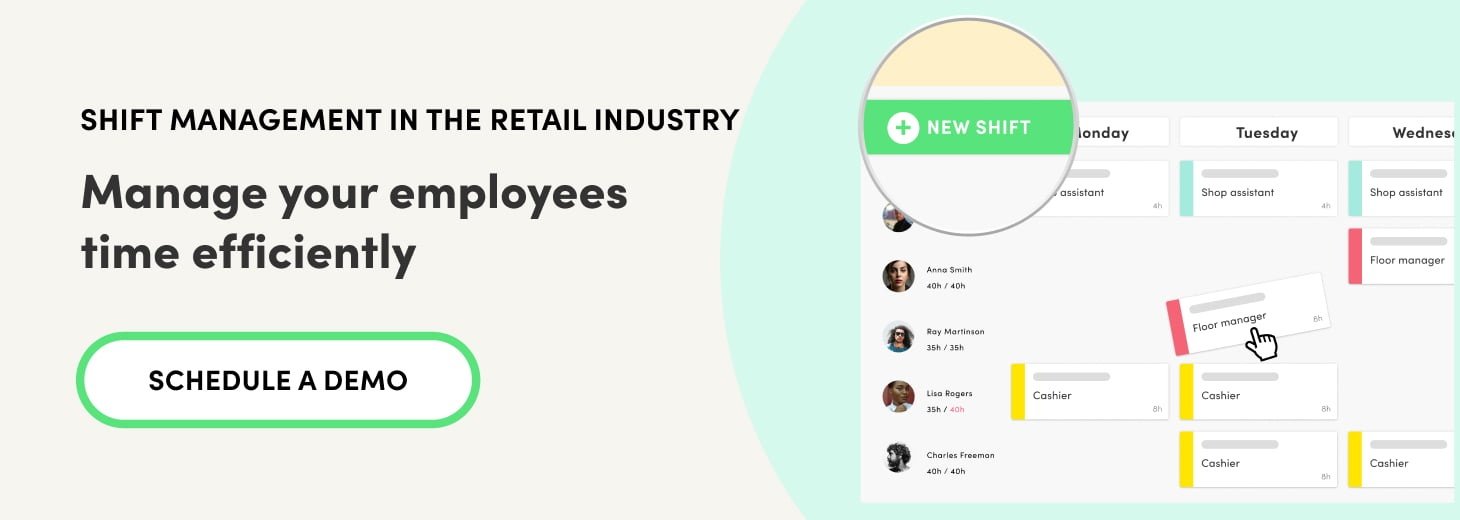Some companies and services need to keep their operations running over long periods of time, in many cases for 24 hours a day, seven days a week. Rotating shifts are designed to manage this, by matching teams of workers to a company’s needs.
However, this scheduling model is subject to certain rules, which are covered by the EU’s Working Time Directive (2003/88/EC) and other legislation. Therefore, it’s important to be up-to-date and know how to create a good shift system that works for the company's workforce, while also respecting employees’ free time.
What does rotating shift work mean?
Rotating shifts can be described as all types of team work schedules in which workers are given successive job postings, according to a certain pattern, be it continuous or irregular, requiring the worker to provide their services at different times in a given period of days or weeks.
In other words, employees take turns to maintain company production over 24 hours a day, 7 days a week. In some cases, this includes weekends and holidays.
This is necessary, for example, in the healthcare industry and emergency services, as they must always be available. A work schedule that enables this is therefore required.
In rotating shift work specifically, there is a set start and finish time, but these will change over the course of days or weeks. This is done, so all employees work under the same conditions and, for example, don’t always have to work weekends or nights.

Legal requirements for rotating shifts
Every EU Member State must create and adapt the necessary regulations for rotating shifts, according to the relevant sections of the EU Working Time Directive. While the pattern of shift work is not specifically mentioned in legislation, overall limits are given in the Working Time Regulations 1998.
The benefits of rotating shifts
Rotating shift work is relatively common and in certain cases it offers very attractive benefits:
Employer benefits
- Companies can organise their employees’ work according to their needs.
- Schedules and shift allocations do not generate bad feeling among employees as they all take their turn.
- Varying the shift pattern helps workers who do monotonous tasks to be more present at work.
Employee benefits
- They have flexibility to adapt shifts to their requirements every week of the month.
- The allocation of the working day is fair, as are breaks.

Disadvantages of rotating shifts
In contrast, as you would imagine, working rotating shifts also has its disadvantages for both sides:
Disadvantages for companies
- Poor shift management can generate discontent among workers.
- Telling employees their shifts at late notice can also cause problems.
- Also, in cases of poor management, there can be a drop in productivity and a growing tendency for work absenteeism.
- If workers don’t rest properly in their free time, the increase in errors can lead to accidents at work.
Disadvantages for employees
- Workers can find it difficult to adapt to certain schedules, which can cause problems relaxing in the medium to long term.
- If there are no suitable rest patterns, problems such as anxiety, stress and depression can arise.
- Work-life balance can be complicated, especially if shift pattern changes happen regularly.
Types of shift work
There are different types of rotating shifts, depending on how the work is organised:
The two-shift pattern
In this type of rotating shift, employees alternate the morning shift with the afternoon shift for, typically, a week. This is one of the most common patterns and is mostly used in companies that work Monday to Friday.
The three-shift pattern
The 24 hours of the day are divided into three 8-hour shifts: morning, afternoon/evening and night. So, the company’s operation never has to shut down, even during weekends. In these cases, workers usually have two rest days between each change of shift.
Forward or backward rotation
Finally, these terms refer to the way in which shifts are rotated. In other words, we can follow the clockwise rotation, which would be morning, afternoon then night. Or alternatively, a backward, or anticlockwise rotation, which would be a night, afternoon and morning (in that order). If you implement a backward shift rotation it is important to ensure there are more than 12 hours between the end of one shift and the start of the next.

Which professions usually involve shift work?
Rotating shifts are usually used in the primary, secondary and tertiary sectors. We commonly find companies that need to maintain their activity over long periods of time in all these sectors, which requires shift staff.
Some examples:
- Logistics.
- Healthcare workers.
- Emergency services.
- Staff at refineries, power plants, etc.
- Fuel stations.
- Security services.
- Public transport services.
Good practices for managing rotating shifts
As we have seen, poor shift management can trigger many problems in the workplace. So, pay attention to this list of best practices:
- Respect rest periods.
- Create rotating shift patterns to organise employee work time properly and ensure they get the breaks they are entitled to.
- Do not allocate night shifts for more than two consecutive weeks (unless the worker requests it).
- Encourage workers to take their breaks on shifts longer than 6 hours.
- Communicate rotas in enough time for workers to get themselves organised.
- Remind employees of the importance of rest when they are not working.
- Try to bear in mind workers’ needs when creating the shift rota.
- Use software to automatically generate shifts to avoid errors.
.jpg)



